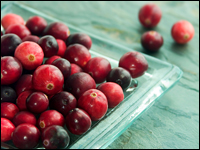Articles by Tom Philpott
Tom Philpott was previously Grist's food writer. He now writes for Mother Jones.
All Articles
-
Despite a recent crackdown, Washington State’s raw-milk policy might point way forward.
In a nation riddled with diet-related maladies like obesity and diabetes, the official fear that greets raw milk is impressive.
You can waltz into any convenience store and snap up foods pumped liberally with government-subsidized high-fructose corn sweetener, deep-fried in government-subsidized partially hydrogenated soybean oil. Yet in many states, teams of bureaucrats devote themselves to "protecting" us from raw milk -- and imposing onerous fines on farmers who dare sell it.
Some states ban raw milk outright; others have erected elaborate barriers between farmer and consumer. Here in North Carolina, for example, I have to pretend I'm buying animal fodder when I visit a nearby dairy farm to pick up a gallon or two of raw milk.
Even so, consumers are increasingly demanding it, banding together with farmers to form Prohibition-like cells from New York City to Portland. To me, it tastes better, more alive, than even the best pasteurized milk; and I tend to believe the health claims made for it.
According to this AP article, Washington State is stepping up enforcement of its raw-milk restrictions, which are actually relatively enlightened.
-
Corn-based packaging not as green as it looks
A few weeks ago, the New York Times ran a memorable piece on its front business page about corn overproduction in Iowa. Entitled "Mountains of Corn and a Sea of Farm Subsidies," the piece featured a photo of a monstrous pile of corn outside of a stuffed-to-capacity grain elevator, "soaring more than 60 feet high and spreading a football field wide," the text informs us.
(Shame on me for not writing about this at the time; the piece has since gone premium.)
One ingenious entrepreneur has even rushed out with "Ski Iowa" t-shirts, the article reports -- a funny echo of the "Ski Iraq" t-shirt that transfixed the character Billy on Six Feet Under in its final season.
Seems that farmers once again produced way too much corn in 2005, cranking it out faster than the likes of Archer Daniels Midland and Cargill can transform it into industrial-food filler, high-fructose corn sweetener, and ethanol. Say what you want about it, but input-heavy, energy-intensive, subsidy-dependent agriculture has certainly proven it can crank out a whole bunch of grain.
I got to thinking about that mountain of unwanted corn when I read another page-one story from the Times' business page, this one on growing corporate/investor interest in "green" technology.
-
Three paths toward a green — and tasty — Thanksgiving
Of all the crimes against nature Thanksgiving inspires — SUVs clogging the highways, planes shuttling fliers around the country, factory farms churning out millions of frozen turkeys — the most grievous may be culinary. First, the above-mentioned turkeys typically taste like sawdust; cranberry “sauce,” a gelatinous goo that ominously retains the shape of the can […]
-
WSJ: China’s oil-demand surge slackens
Peak-oil enthusiasts and skeptics alike will find much to chew on in this page-one piece from today's Wall Street Journal.
By all accounts, China's explosive energy-demand growth over the past several years has strained the ability of OPEC and other oil producers to keep up. Now, the Journal claims, that pressure shows signs of easing:
This year, China is on track to account for about 16% of the world's new oil consumption, little more than half last year's share. The Centre for Global Energy Studies estimates that Chinese demand will rise by about 230,000 barrels of oil a day this year -- a large increase, but a far cry from the 860,000-barrel-a-day jump of 2004 and a much more manageable pace for global suppliers.
The article also features the spectacle of a big-time oil exec engaging in a bit of what's known on Wall Street as "jawboning" -- trying to influence the market (in this case talking it down) with mere words. The Journal reports:
Though most market watchers were caught off guard by last year's steep run-up in China's oil demand, [Exxon Mobil CEO Lee] Raymond said that its consumption growth has been generally in line with industry expectations. "Speculation" accounts for about $20 of the current per-barrel price of oil, Mr. Raymond estimated. "The fundamentals" of supply and demand, he said, "support something like $35 or $40." The Exxon chief said that, in about a decade, it will be likelier that oil prices will be below $35 than they will be to stay at today's level of about $60 a barrel. [Emphasis added.]
Might outrage over last quarter's startling profits, as well as the Congressional price-gouging hearings, have influenced Raymond's desire to describe a frothy, puffed-up oil market?
